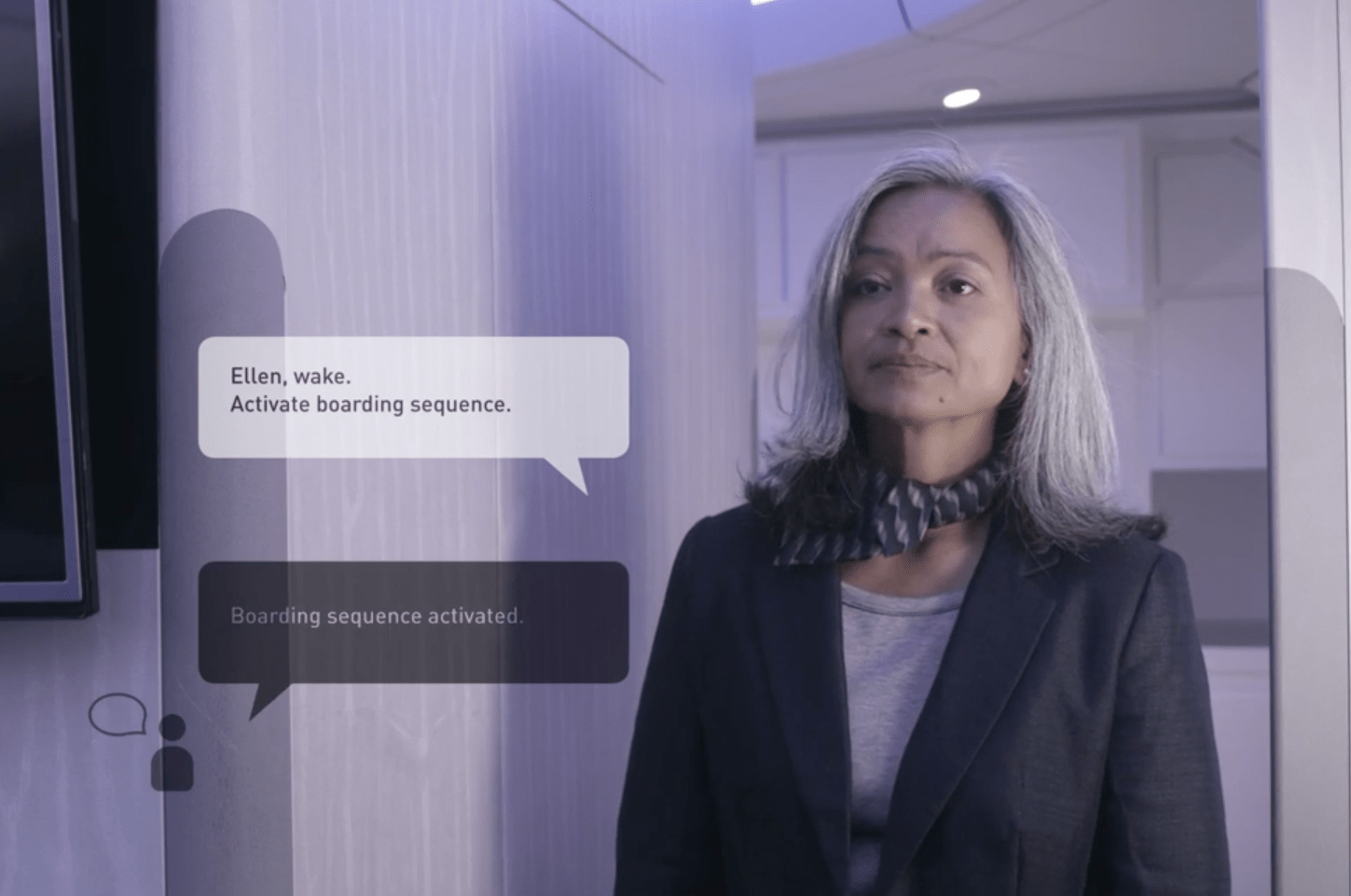Boeing’s Virtual Cabin Assistant Concept Could Automate Crews’ Tasks
Share

Smart technology, applied correctly, is also at the core of Boeing’s connected cabin. The company is exploring how the Internet of Things can improve the passenger experience and create efficiencies for the crew.
An intriguing idea Boeing is exploring is based on the premise that, in a digital, data-driven world, “The cabin should be able to take care of itself,” Jeff Roberts, a chief engineer at Boeing Commercial Airplanes, told attendees at the recent Aircraft Cabin Innovation Summit in Seattle. “The cabin knows and orchestrates what it needs to do, perfectly timed, every time,” he added.
To bring this idea to fruition, the company is working on a virtual cabin assistant dubbed “Ellen,” in honor of Ellen Church. She was a licensed pilot and a registered nurse who became the world’s first female cabin flight attendant in 1930. In Boeing’s smart cabin concept, virtual assistant Ellen would help lighten the cabin crew’s workload, allowing them to focus more attention on passengers.
“Ellen might automatically prepare the cabin for departure and let the crew know if there is something that needs their attention,” Roberts said. “She could check the overhead bins and doors to ensure they are locked and that all seats are in takeoff position. She could change the cabin lighting, adjust the dimmable window and advise the crew when the cabin is ready for departure.”
“Ellen might automatically prepare the cabin for departure and let the crew know if there is something that needs their attention.” – Jeff Roberts, Boeing
She could also be programmed to do more. Future duties Ellen might take over include automatically adjusting the cabin’s temperature, humidity and sound level and continuously monitoring the galley inventory and matching it with actual and predicted demand.
As helpful as she sounds, “Ellen” won’t be joining cabin crews just yet. “Reception has been positive,” Roberts said. “But we need to further assess market interest and complete development and testing before any given feature can be offered in our cabins.”
In the Eye of the Beholder
Suppliers of goods and service for airplane interiors have an ever-expanding – and constantly evolving – technology toolbox to draw from. And, as any passenger who’s needed a pre-flight lesson in navigating the controls that let them “pilot” their business or first-class seat will tell you, sometimes technology can get in the way of feeling comfortable and at home on a plane.
Trendy technology is exerting a strong force on the airline interiors industry, said Garen Moreno, director, Strategic Partnering, at BMW Designworks. “But while we’re used to touching all these screens, perhaps there’s a more natural approach that has less of a cognitive load on the passenger.”
The successful passenger-friendly technology of the future may involve less scrolling, clicking and swiping and, according to Moreno, instead rely on “more human” interaction, such as gestures, voice and eye gaze.


